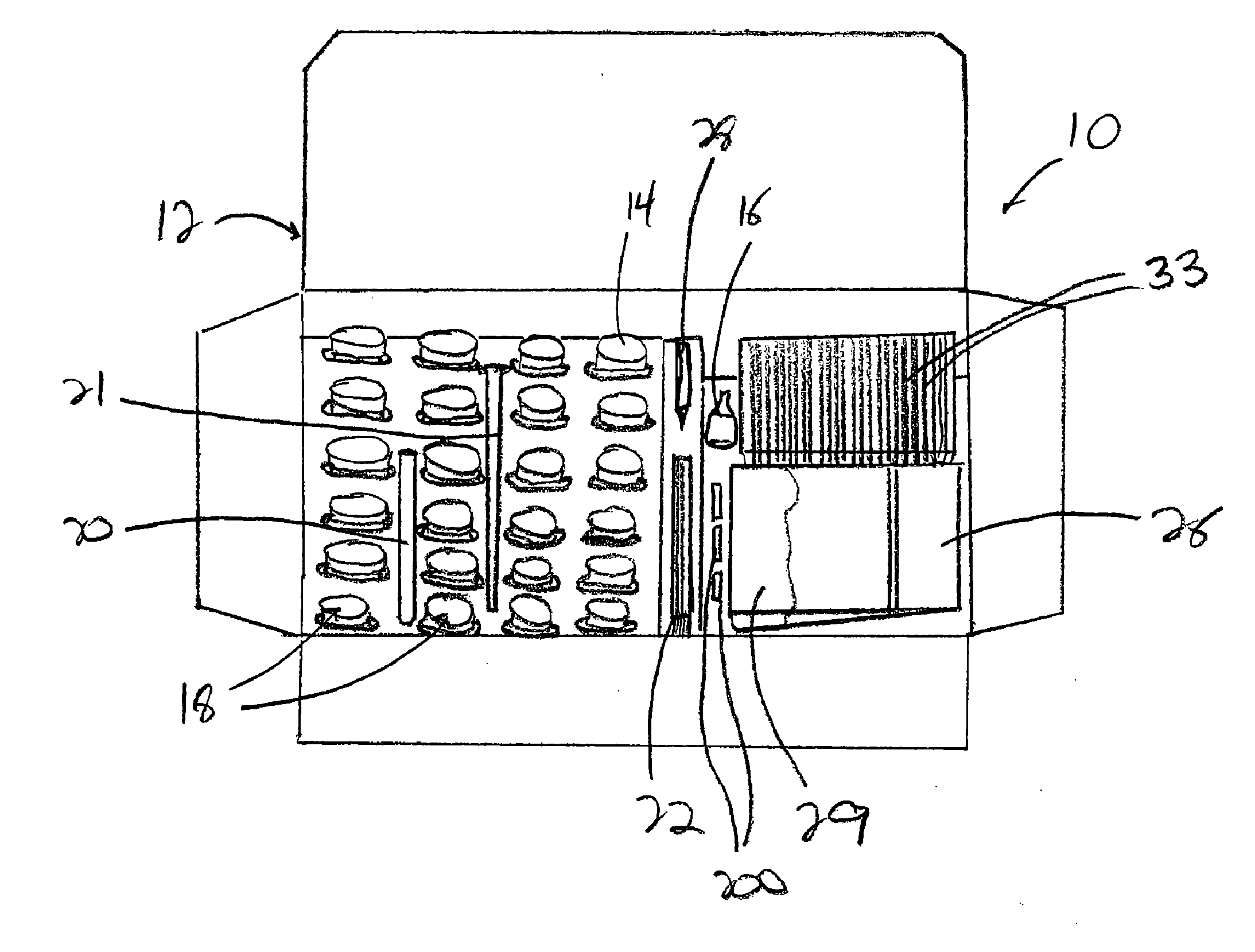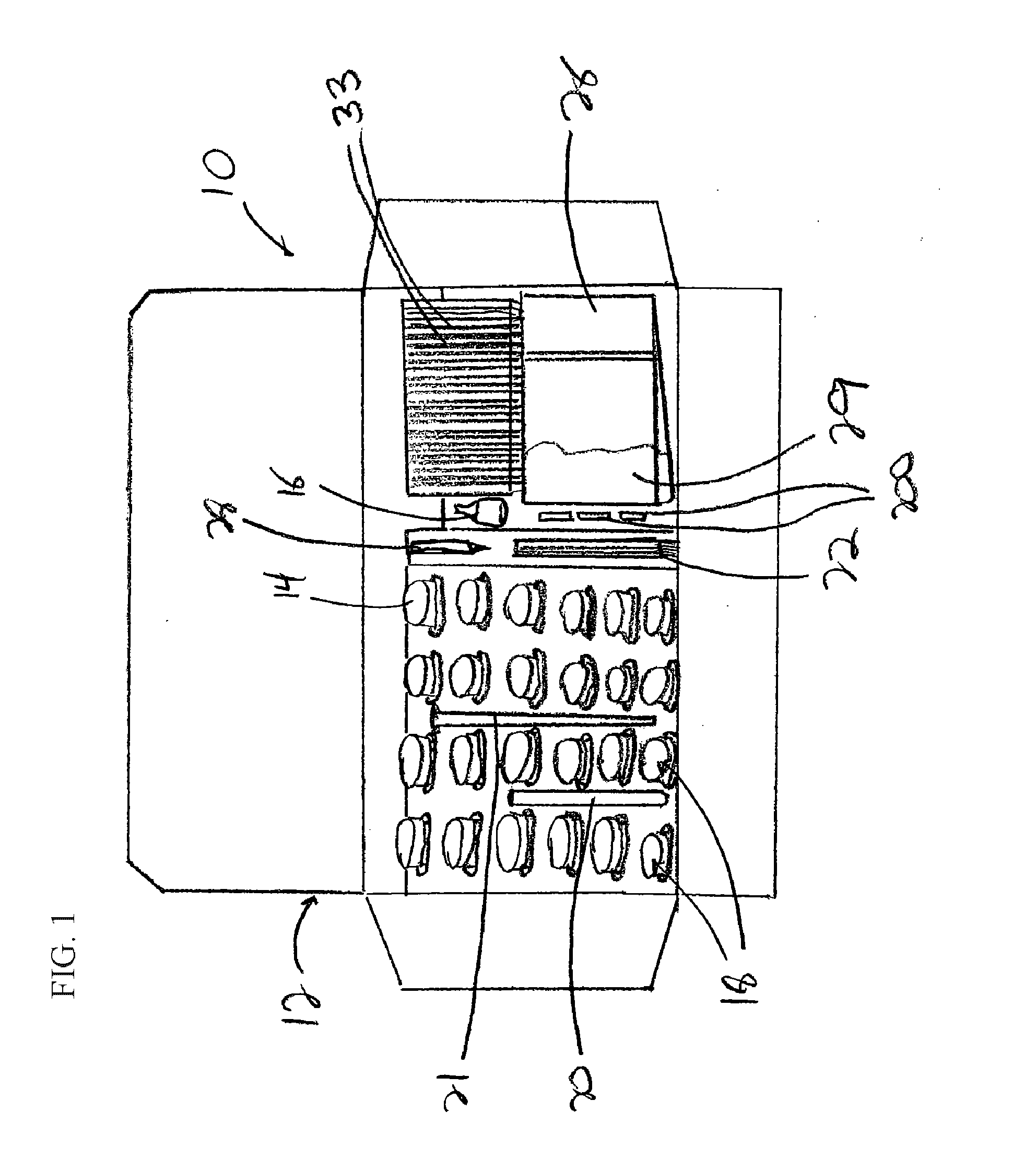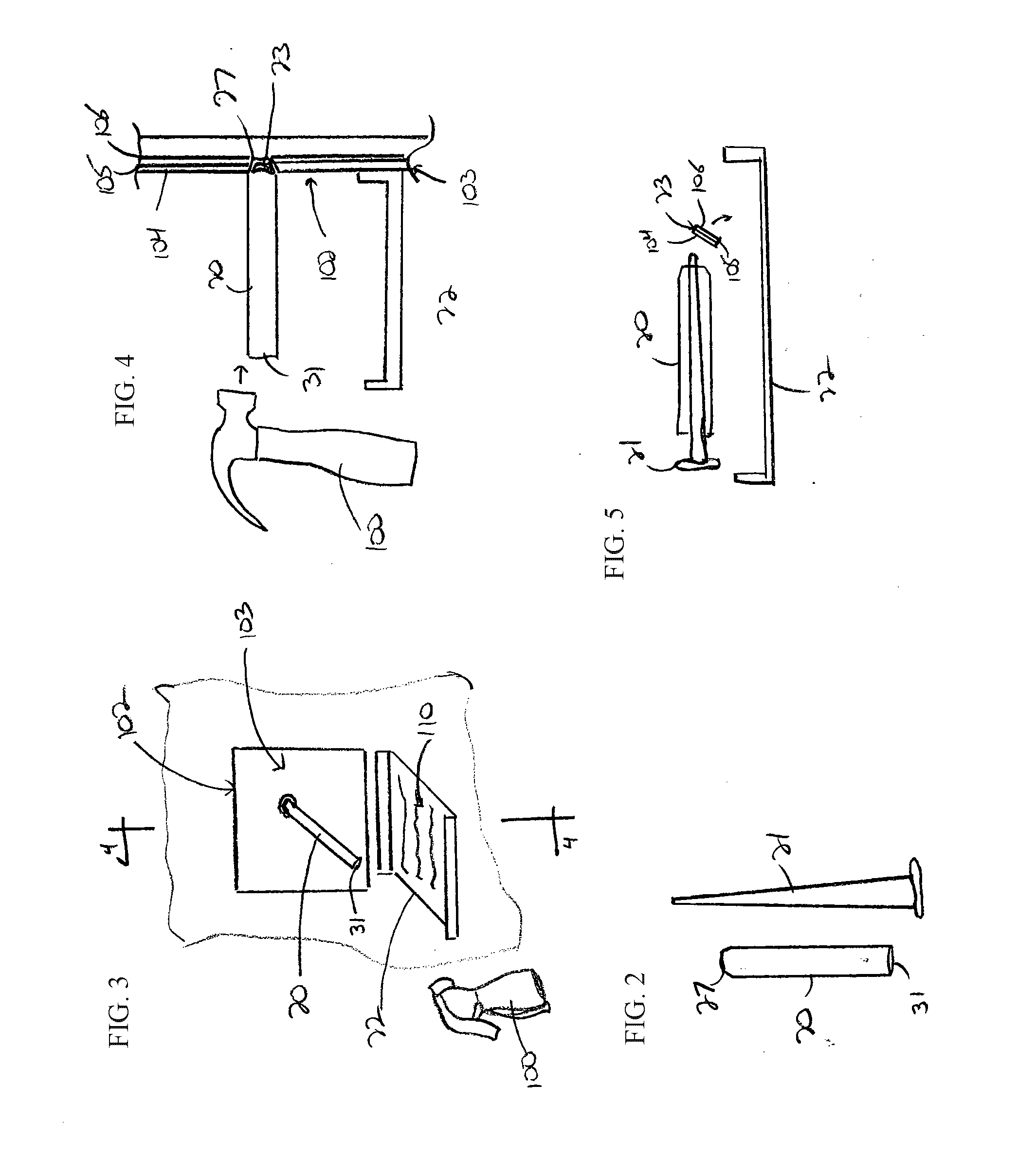Testing Method and Kit for Detecting Lead, Mercury, and Chromate in Paint , Varnish, and Other surface Coatings
Inactive Publication Date: 2011-11-24
ASKIN DANIEL P +1
View PDF4 Cites 9 Cited by
- Summary
- Abstract
- Description
- Claims
- Application Information
AI Technical Summary
Benefits of technology
[0042]According to yet another aspect of the present disclosure, the kit and testing method can result in the detection of both lead and sodium chromate (CrO4−2) and dichromate (Cr2O7−2) in coatings by the appearance of a faint yellow color of the solution when it is mixed with the alkaline solution before the addi
Problems solved by technology
When the coatings formed with lead therein age, they deteriorate and consequently create lead-containing or lead-contaminated dust.
When these coatings are disturbed by cutting, drilling, sanding, or other methods commonly employed to remove building materials; the lead dust is released from the coating as a result of its disintegration and can readily disseminate and contaminate large areas.
This has become problematic, because lead-contaminated dust has been identified as a significant health hazard, particularly to children.
While each type of lead compound may have certain properties that differentiate it from the remainder of the compounds, the commonality of the presence of lead in each compound renders each of these compounds a health risk.
Upon deterioration of the coating over time, Hex Chrome contaminated dust is generated as well as during removal of the coating or removal of painted components.
Additionally, the testing procedure is expensive, with a typical lab analysis for lead in the surface coating specimen costing between $15 and $35 per sample.
Yet another disadvantage of this method is the time delay between the time the sample is collected and the results are received from the lab, which can be days or weeks depending upon the number of tests to be run.
This can significantly delay the project, resulting in highly increased costs.
Nevertheless, while this method gives instant results, i.e., within minutes, there are some significant drawbacks with this method as well.
In particular, the spectrometer instrument is expensive, and requires a trained operator who also possesses a nuclear license from the Nuclear Regulatory Commission.
However, the various chemical spot tests available are either unable to consistently detect lead chromate, which has historically been utilized as a common pigment, or difficult to detect lead-containing driers, such as lead linoleate and lead naphthenate.
Further, while they are marketed as providing fast results, when used to determine the presence of lead chromate, the currently commercially available chemical spot test kits either do not detect lead chromate, or if they do, the test kits can take anywhere from ½-24 hours to have a conclusive test.
A further limitation of the existing chemical spot tests includes interferences from other common components of paint and varnish coatings and the substrates to which the coatings have been applied.
In addition, and perhaps most importantly, the chemical spot tests have various issues regarding their detection limits.
For example, the detection limits for the tests can vary with the form of lead that is present, rendering the tests unusable for certain lead-containing compounds, and have been found to be insufficiently accurate (i.e., none of the chemical test kits were able to achieve low (5% or lower) rates of both false positive and false negative results) by: 1) the U.S. Consumer Product Safety Commission (CPSC) as reported in: CPSC STAFF REPORT: EVALUATION OF LEAD TEST KITS, October 2007; 2) the National Institute for Standards and Technology and the U.S. Department of Housing and Urban Development Office of Lead Hazard Control as reported in: NISTIR 6398, “Spot Test Kits For Detecting Lead in Household Paint: A Laboratory E
Method used
the structure of the environmentally friendly knitted fabric provided by the present invention; figure 2 Flow chart of the yarn wrapping machine for environmentally friendly knitted fabrics and storage devices; image 3 Is the parameter map of the yarn covering machine
View moreImage
Smart Image Click on the blue labels to locate them in the text.
Smart ImageViewing Examples
Examples
Experimental program
Comparison scheme
Effect test
 Login to View More
Login to View More PUM
 Login to View More
Login to View More Abstract
A testing kit and method of testing for the presence of lead mercury and chromate in surface coatings is provided that can accurately determine the presence of lead, mercury and chromate in the surface coating without interference from other constituents of the surface coating. The kit includes an alkaline caustic that is utilized to dissolve the coating material to enable any lead or mercury present in the coating material to react with a subsequently added second solution containing sulfide ions, while preventing interference of other ionic species with the interaction of the lead and sulfide. The sulfide ions can then react with the lead or mercury in order to produce a dark color for the resulting solution. The resulting color can then be compared against a color standard to determine the amount of lead or mercury present in the sample. The kit and method also enables a determination for the presence of chromate by dissolving the coating material in the alkaline solution and observing the development of a characteristic pale yellow color.
Description
CROSS-REFERENCE TO RELATED APPLICATIONS[0001]This application claims priority from U.S. Provisional Application Ser. No. 61 / 346,291, filed on May 19, 2010, the entirety of which is hereby expressly incorporated by reference herein.FIELD OF THE INVENTION[0002]The present invention relates to testing methods, and more specifically to a testing method and kit for determining the presence of lead and chromate in coatings, such as paint and varnishes.BACKGROUND OF THE INVENTION[0003]Metal compounds have been used in paints and coatings for as long as paints and coatings have been produced. These metal compounds provide coloration along with many other desirable properties, including but not limited to the ability to hide an underlying surface color; as well as provide a coating in a color of choice and to protect the coated material from corrosion or premature failure from environmental causes. This simple test provides a rapid means for the determination of the presence of the lead in c...
Claims
the structure of the environmentally friendly knitted fabric provided by the present invention; figure 2 Flow chart of the yarn wrapping machine for environmentally friendly knitted fabrics and storage devices; image 3 Is the parameter map of the yarn covering machine
Login to View More Application Information
Patent Timeline
 Login to View More
Login to View More IPC IPC(8): G01N33/00
CPCG01N33/32G01N31/22
Inventor ASKIN, DANIEL P.DORKO, ZSUZSANNA
Owner ASKIN DANIEL P
Features
- R&D
- Intellectual Property
- Life Sciences
- Materials
- Tech Scout
Why Patsnap Eureka
- Unparalleled Data Quality
- Higher Quality Content
- 60% Fewer Hallucinations
Social media
Patsnap Eureka Blog
Learn More Browse by: Latest US Patents, China's latest patents, Technical Efficacy Thesaurus, Application Domain, Technology Topic, Popular Technical Reports.
© 2025 PatSnap. All rights reserved.Legal|Privacy policy|Modern Slavery Act Transparency Statement|Sitemap|About US| Contact US: help@patsnap.com



